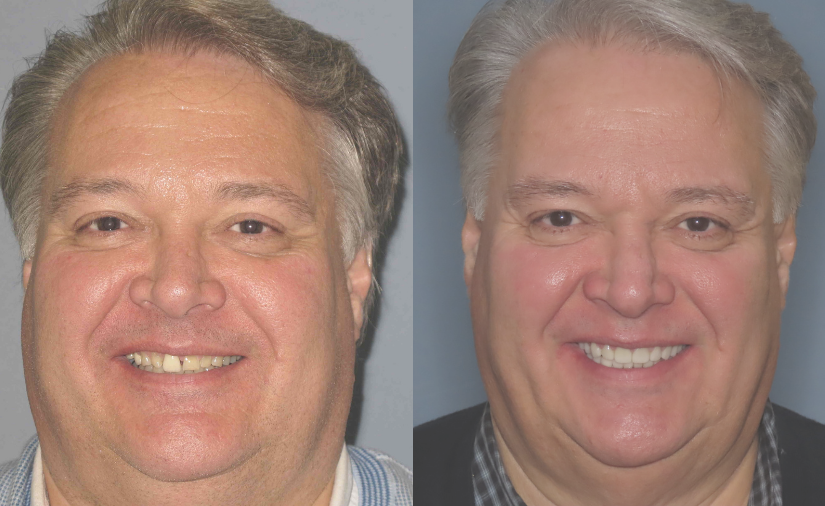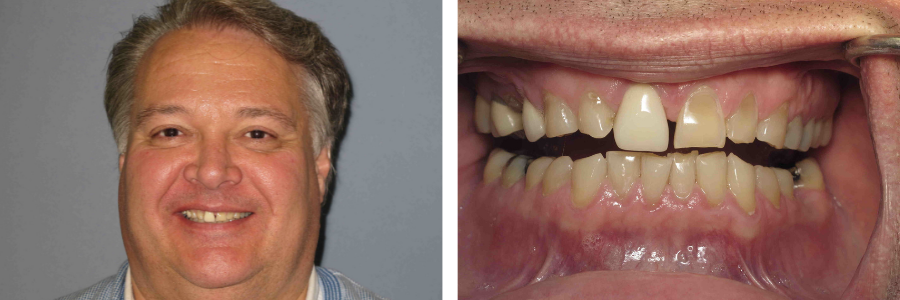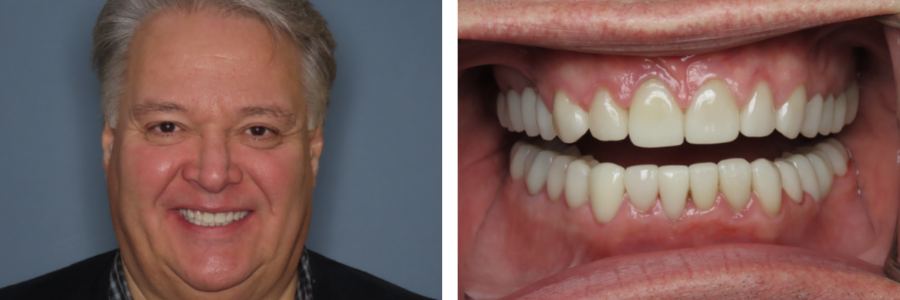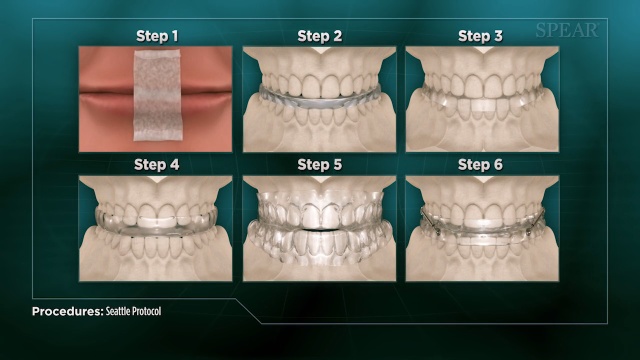By: Dr. Elizabeth Eggert
How did this start?
Patient LK (this patient asked that we only use her initials) started her anterior restoration treatment with us after she chipped a filling out of one of her front teeth. LK had previously chipped this same filling, mostly because of how her bite comes together, and she was looking for a more permanent option. She also did not like the black triangles that were visible between her teeth when she smiled.
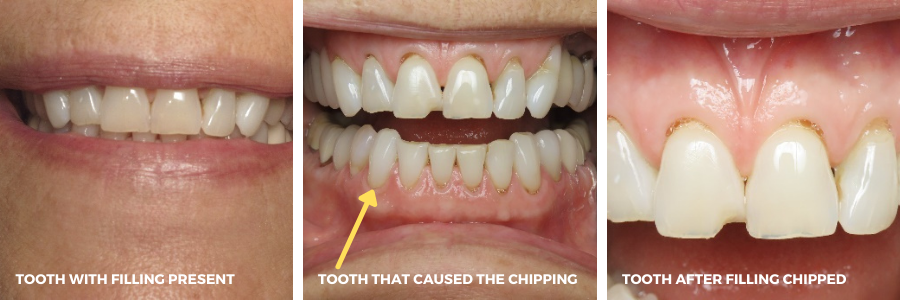
What was involved?
Upon examination it was noted that LK’s teeth had worn significantly at the edges which made her teeth look shorter. It was recommended that she undergo the records process to determine ideal treatment and what potential alternatives she had.
Through the records process with Dr. Elizabeth Eggert, LK’s treatment plan was developed. The records process involves an evaluation of muscles, jaw function, teeth, and their relationships with each other. Photos are taken of the mouth to help in visualizing how everything fits together and moves. Impressions are also made in order to create a 3D modeling of the patient’s teeth.
Through the analysis of the records process, it was recommended that LK consider doing orthodontic treatment in order to move teeth into a more functional position and prevent further breakdown of her teeth and potential restorations. It was also recommended that LK veneer her eight front teeth. Four on the upper arch and four on the lower arch. The analysis showed that the reason LK’s filling kept coming out was because her teeth are hitting too heavy against each other. The orthodontic tooth movement and 8 veneers would be able to create better functional harmony as well as redesign the teeth to correct the wear that had occurred.
What did LK want?
During the consult appointment, LK noted that she was not interested in orthodontic treatment and she planned to veneer only her two front anterior teeth. LK was willing to take the risk that her new restorations may not last long-term due the disharmony in her currently functioning system. Since LK would not be doing orthodontics, Dr. Elizabeth Eggert let her know that using a splint to protect her new veneers would be critical in order to improve our chances for success.
LK was concerned that it would be hard to get a good color match but when she saw our assortment of colors she was less concerned. LK thought about bleaching her teeth, but was worried they would be sensitive. She had tried over-the-counter products in the past, but had sensitivity issues. After reviewing her bleaching options, LK decided she would match her new veneers to her current color so she would not have to maintain the color long-term. Dr. Elizabeth was able to improve the esthetics of LK’s front teeth by restoring them to their original size and appearance. LK was very pleased with the result and stated, “It was like Christmas!” Thanks for putting your trust in us LK, it is always a pleasure working with you!
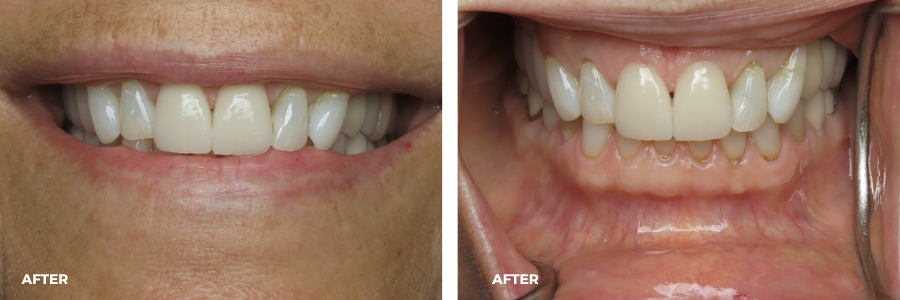
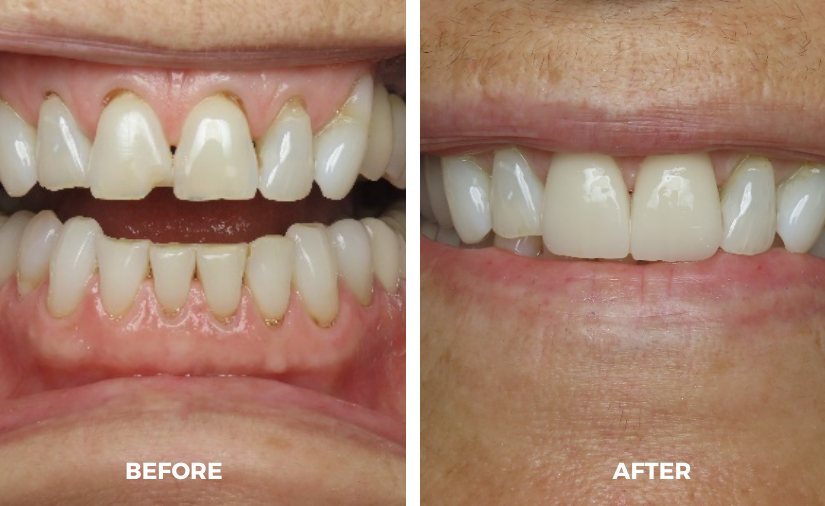


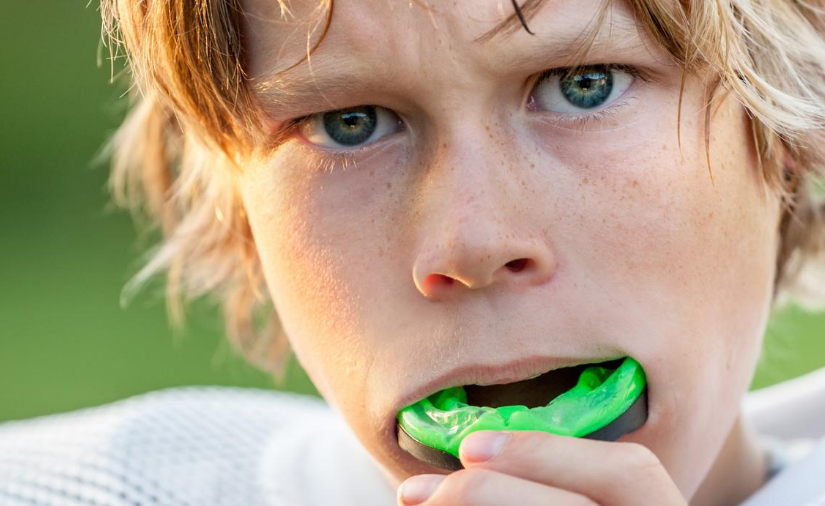
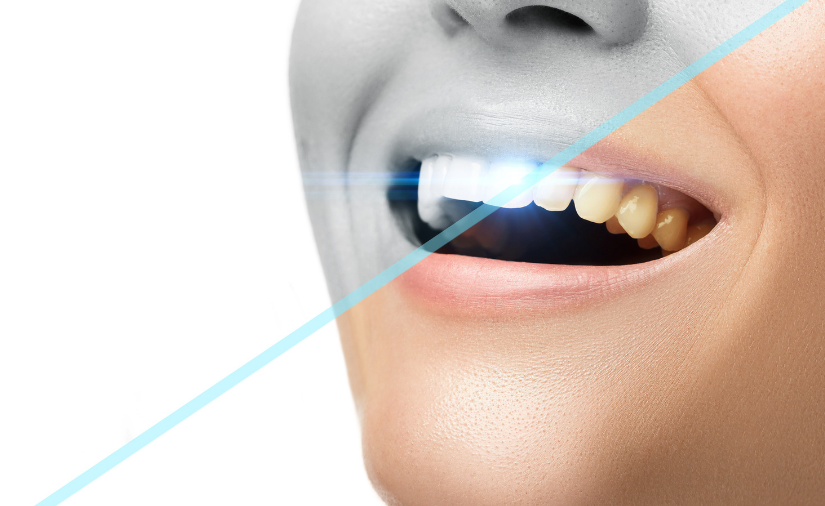

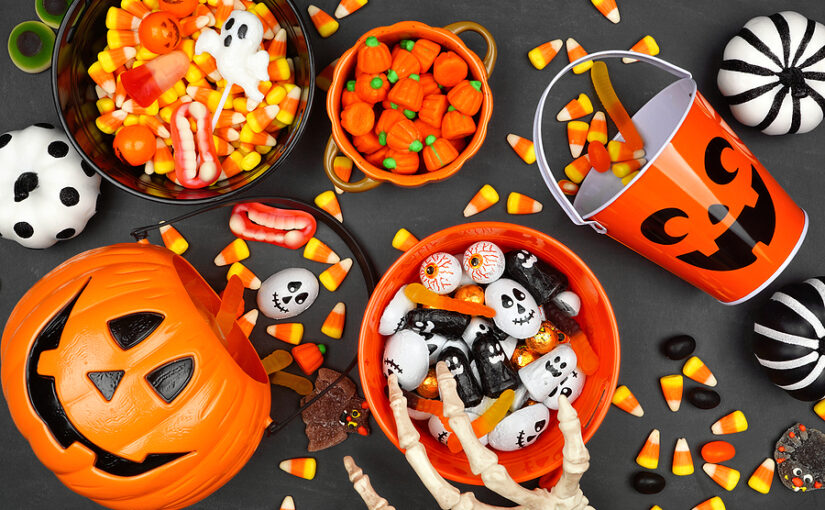
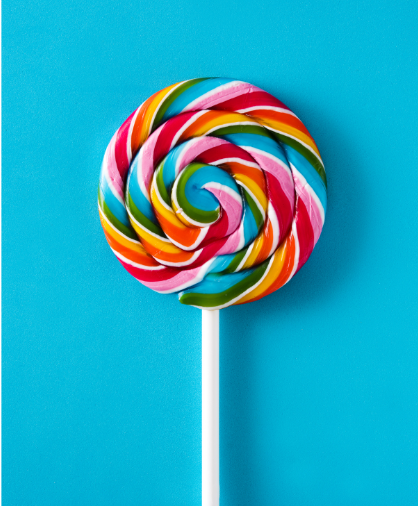 Candy on a stick, such as lollipops or rock candy, is meant to be enjoyed over time. Because it lingers in your mouth, it increases the production of saliva. However, instead of the saliva doing its job and rinsing bacteria out of your mouth, it only spreads the sugar around. Additionally, your mouth produces acid in an attempt to destroy the sticky sugar that then coats your teeth. The acid and sugar team up to break down tooth enamel and, with repeat exposure, can result in tooth decay.
Candy on a stick, such as lollipops or rock candy, is meant to be enjoyed over time. Because it lingers in your mouth, it increases the production of saliva. However, instead of the saliva doing its job and rinsing bacteria out of your mouth, it only spreads the sugar around. Additionally, your mouth produces acid in an attempt to destroy the sticky sugar that then coats your teeth. The acid and sugar team up to break down tooth enamel and, with repeat exposure, can result in tooth decay.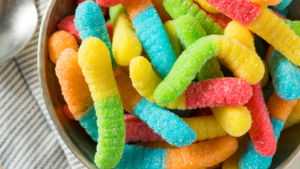 You might be wondering where sour candy fits into the picture. Warheads, Sour Patch Kids, Sour Skittles…kids LOVE sour candy and love to challenge themselves and their friends to eat large quantities of it or hold the sour candy in their mouths for long periods of time.
You might be wondering where sour candy fits into the picture. Warheads, Sour Patch Kids, Sour Skittles…kids LOVE sour candy and love to challenge themselves and their friends to eat large quantities of it or hold the sour candy in their mouths for long periods of time.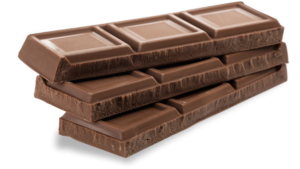 One of the most popular categories of Halloween candy are chocolates. While many have sticky centers like Twix, Rollos or Snickers, others like Hershey’s bars and Nestle Crunch dissipate quickly in your mouth, making them more dental-friendly than almost any other candy.
One of the most popular categories of Halloween candy are chocolates. While many have sticky centers like Twix, Rollos or Snickers, others like Hershey’s bars and Nestle Crunch dissipate quickly in your mouth, making them more dental-friendly than almost any other candy.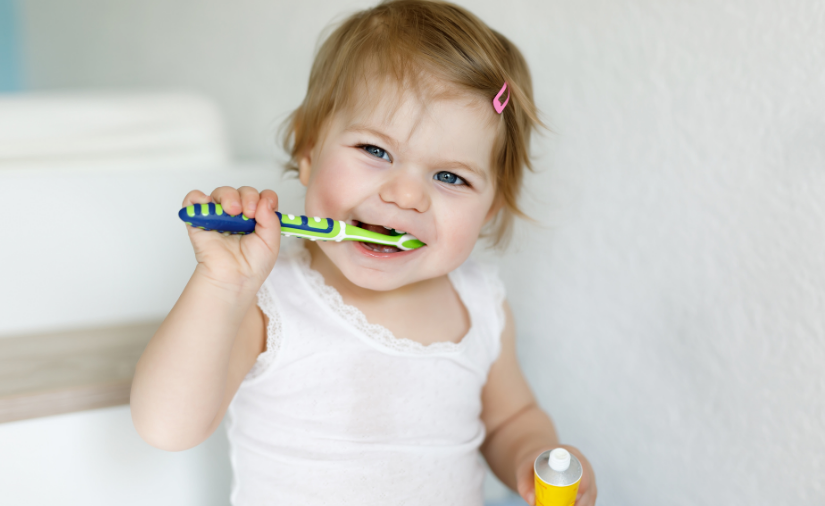
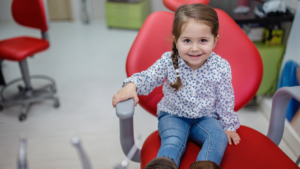 When you bring your baby in for their first dental visit, Dr. Elizabeth or Dr. Jeff will take a peek in their mouth and check all erupted teeth to make sure they’re healthy. Then they will discuss basic baby and toddler oral care, address the
When you bring your baby in for their first dental visit, Dr. Elizabeth or Dr. Jeff will take a peek in their mouth and check all erupted teeth to make sure they’re healthy. Then they will discuss basic baby and toddler oral care, address the 
 Buy your child a new toothbrush, a tube of
Buy your child a new toothbrush, a tube of 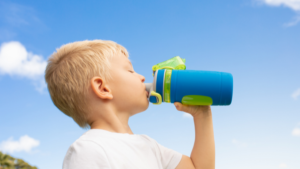 Check the school’s gum policy and, if it’s allowed, give your child a pack of sugar-free gum to chew after lunch to help clean their teeth
Check the school’s gum policy and, if it’s allowed, give your child a pack of sugar-free gum to chew after lunch to help clean their teeth Crunchy foods like carrots, celery and apples; limit citrus fruits which erode enamel quickly
Crunchy foods like carrots, celery and apples; limit citrus fruits which erode enamel quickly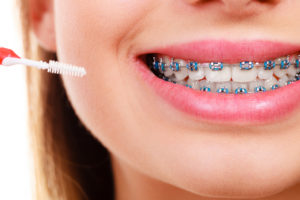 Put a travel toothbrush, a small tube of fluoride toothpaste, a container of floss and a container of dental wax in a small zipper bag and encourage them to brush their teeth after lunch
Put a travel toothbrush, a small tube of fluoride toothpaste, a container of floss and a container of dental wax in a small zipper bag and encourage them to brush their teeth after lunch